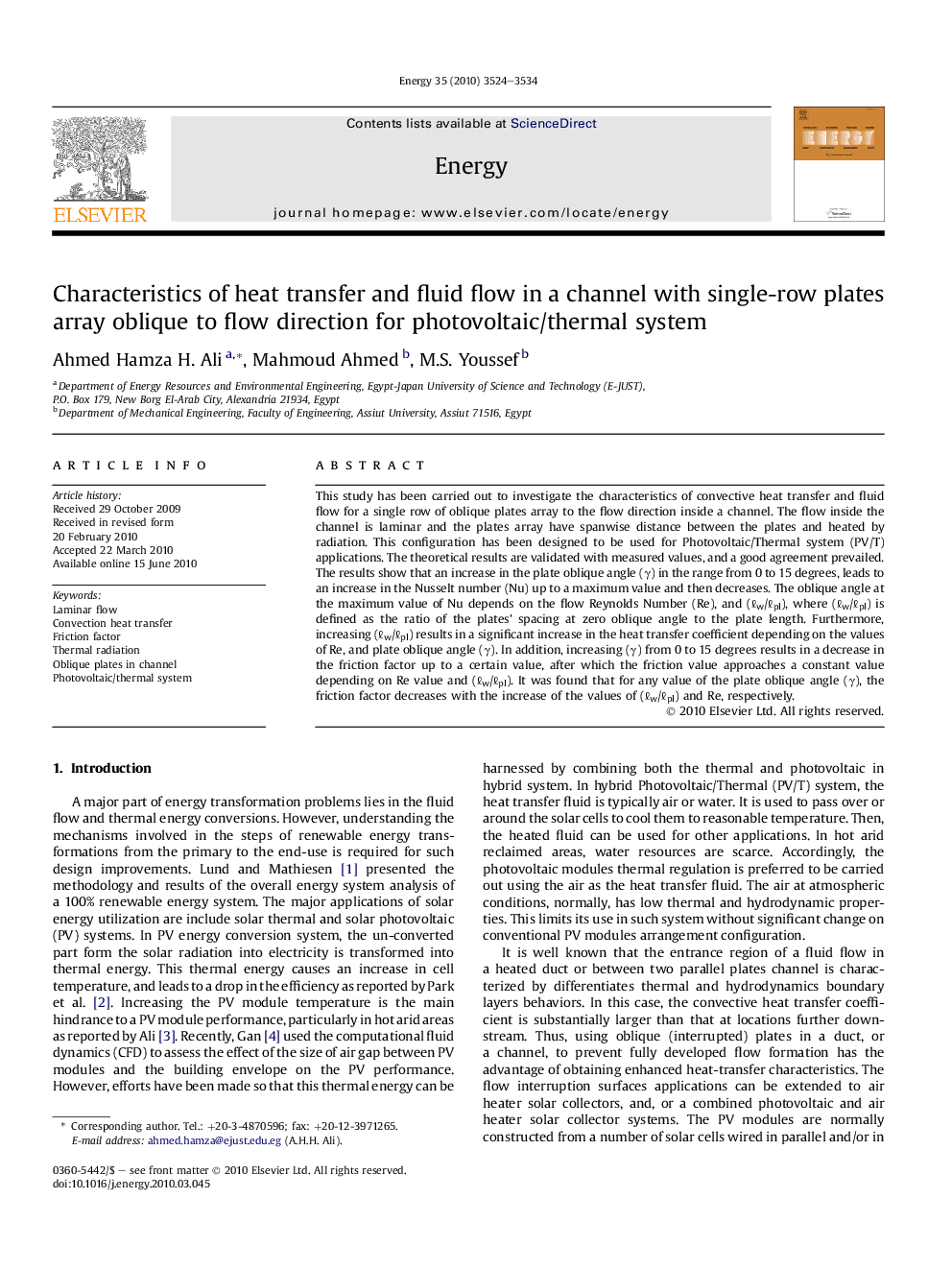| Article ID | Journal | Published Year | Pages | File Type |
|---|---|---|---|---|
| 1734922 | Energy | 2010 | 11 Pages |
Abstract
This study has been carried out to investigate the characteristics of convective heat transfer and fluid flow for a single row of oblique plates array to the flow direction inside a channel. The flow inside the channel is laminar and the plates array have spanwise distance between the plates and heated by radiation. This configuration has been designed to be used for Photovoltaic/Thermal system (PV/T) applications. The theoretical results are validated with measured values, and a good agreement prevailed. The results show that an increase in the plate oblique angle (γ) in the range from 0 to 15 degrees, leads to an increase in the Nusselt number (Nu) up to a maximum value and then decreases. The oblique angle at the maximum value of Nu depends on the flow Reynolds Number (Re), and (âw/âpl), where (âw/âpl) is defined as the ratio of the plates' spacing at zero oblique angle to the plate length. Furthermore, increasing (âw/âpl) results in a significant increase in the heat transfer coefficient depending on the values of Re, and plate oblique angle (γ). In addition, increasing (γ) from 0 to 15 degrees results in a decrease in the friction factor up to a certain value, after which the friction value approaches a constant value depending on Re value and (âw/âpl). It was found that for any value of the plate oblique angle (γ), the friction factor decreases with the increase of the values of (âw/âpl) and Re, respectively.
Keywords
Related Topics
Physical Sciences and Engineering
Energy
Energy (General)
Authors
Ahmed Hamza H. Ali, Mahmoud Ahmed, M.S. Youssef,
